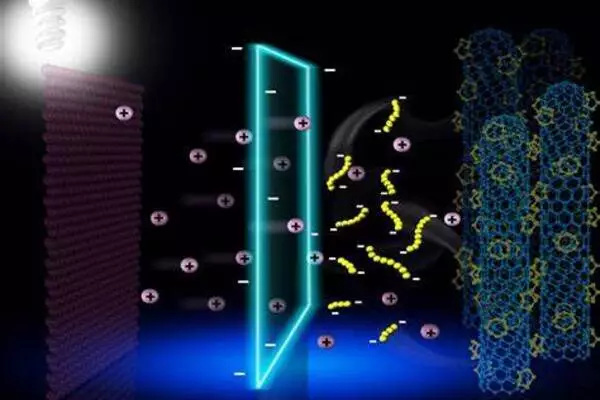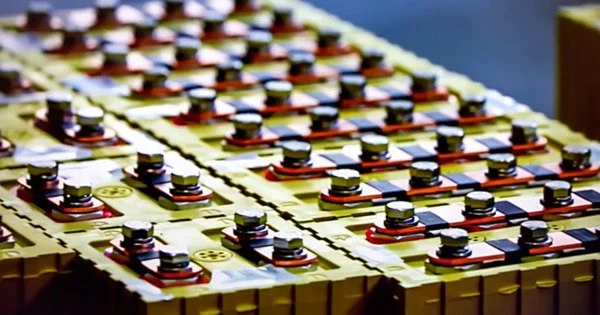Lithium-sulfur batteries (LSBs) have a greater capacity for energy storage. However, difficulties like as lithium polysulfides and lithium dendrite growth cause capacity loss and pose safety concerns. Researchers have created a graphene separator that is embedded with platinum-doped gold nanoclusters, which improves lithium-ion transport and facilitates redox processes. This solution addresses long-standing LSB concerns, paving the way for their commercialization.
The demand for effective energy storage systems is growing all the time, thanks to the recent appearance of intermittent renewable energy and the widespread adoption of electric vehicles. Lithium-sulfur batteries (LSBs), which can store three to five times the energy of typical lithium-ion batteries, have emerged as a possible alternative in this area.
LSBs use lithium as an anode and sulfur as a cathode, however, this combination presents difficulties. The “shuttle effect,” in which intermediate lithium polysulfide (LiPS) species generated during cycling travel between the anode and cathode, causes capacity fading, a short life cycle, and poor rate performance, is a serious issue. Other issues include sulfur cathode expansion during lithium-ion absorption, as well as the development of insulating lithium-sulfur species and lithium dendrites during battery operation. While many solutions have been employed to solve these issues, such as cathode composites, electrolyte additives, and solid-state electrolytes, they include trade-offs and considerations that limit further development of LSBs.
LSBs containing metal nanoclusters could find use in electric vehicles, portable electronics, renewable energy storage, and other industries that require advanced energy storage solutions.
Prof. Negishi
Due to its high designability as well as distinctive geometric and electrical architectures, atomically precise metal nanoclusters, and aggregation of metal atoms spanning in size from 1-3 nanometers, have recently gained considerable attention in materials research, notably on LSBs. Despite the fact that several viable applications for metal nanoclusters have been proposed, there are no instances of their practical applications.
Now, in the latest collaborative study published in the journal Small on 25 August 2023, a team of researchers from Japan and China, led by Professor Yuichi Negishi of Tokyo University of Science (TUS), has harnessed the surface binding property and redox activity of platinum (Pt)-doped gold (Au) nanoclusters, Au24Pt(PET)18 (PET: phenylethanethiolate, SCH2CH2Ph), as a high-efficiency electrocatalyst in LSBs. The work is co-authored by Assistant Professor Saikat Das from TUS Professor Deyan He and Junior Associate Professor Dequan Liu from Lanzhou University, China.

The researchers prepared composites of Au24Pt(PET)18 and graphene (G) nanosheets with a large specific surface area, high porosity, and conductive network, using them to develop a battery separator that accelerates the electrochemical kinetics in the LSB. “The LSBs assembled using the Au24Pt(PET)18@G-based separator arrested the shuttling LiPSs, inhibited the formation of lithium dendrites, and improved sulfur utilization, demonstrating excellent capacity and cycling stability,” highlights Prof. Negishi. The battery showed a high reversible specific capacity of 1535.4 mA h g−1 for the first cycle at 0.2 A g−1 and an exceptional rate capability of 887 mA h g−1 at 5 A g−1. Additionally, the capacity retained after 1000 cycles at 5 A g−1 was 558.5 mA h g−1.
These findings emphasize the benefits of employing metal nanoclusters in LSBs. They include increased energy density, longer cycle life, improved safety features, and a lower environmental impact of LSBs, which make them more environmentally friendly and competitive with other energy storage technologies.
“LSBs containing metal nanoclusters could find use in electric vehicles, portable electronics, renewable energy storage, and other industries that require advanced energy storage solutions.” Furthermore, Prof. Negishi believes that this research will pave the way for all-solid-state LSBs with other innovative functions. The proposed technology could lead to more cost-effective and long-lasting energy storage systems in the near future. This would assist to cut carbon emissions and encourage the use of renewable energy, so encouraging sustainability.





